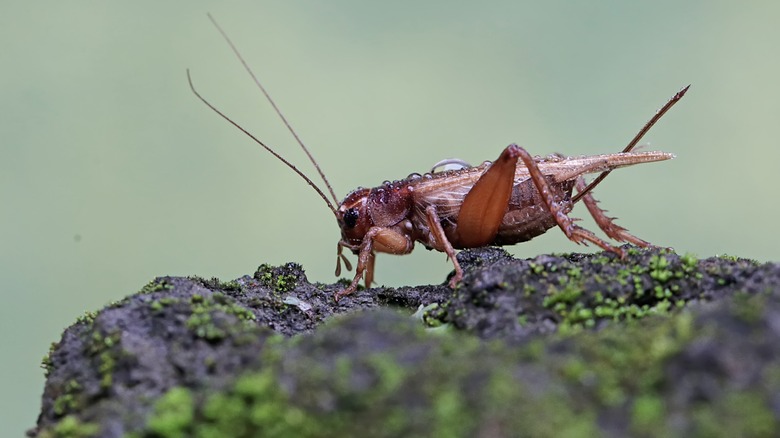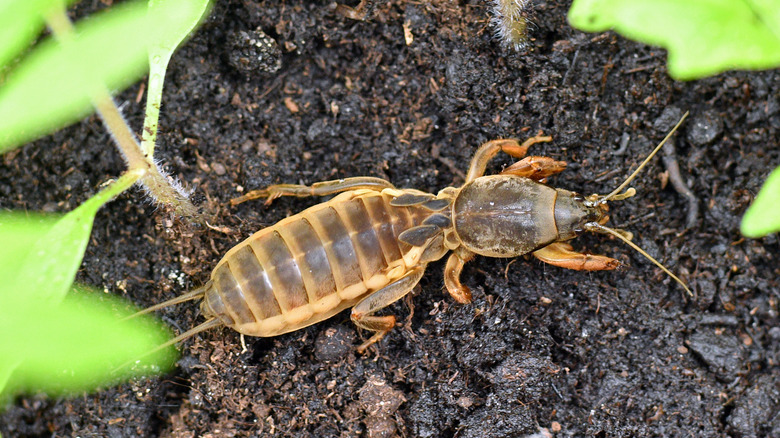Are Crickets Good For Your Garden? Here's What You Should Know
Considering how destructive the cricket's close relative, the grasshopper, can be to gardens and yards, it's understandable to have concerns about crickets themselves. A few different types of crickets live in North America, with the majority causing little, if any, damage. Some crickets, however, can become major pests and destroy lawns and fabrics inside the home.
Tree crickets (Oecanthus spp.) are considered to be harmless, almost beneficial insects to have around, thanks to their willingness to eat aphids and other pests. House crickets, also called field crickets (Gryllus spp.), are largely thought of as harmless in gardens, though they have been found to eat certain fabrics, making them annoying pests to have inside the home. Some mole crickets (Neoscapteriscus spp.), on the other hand, are quite invasive in the Southeastern United States and are considered major pests due to their tendency to eat the roots of turfgrass, destroying lawns in the process.
Deterring unwanted crickets
If you haven't seen any evidence of crickets causing damage and simply hear them sing their song from time to time, there's no reason to be concerned. If, however, you're finding evidence of mole crickets infesting your lawn, then you may need to act. Signs of mole cricket activity include raised lumps in your lawn and dead or dying brown patches of grass. Pouring soapy water over suspicious patches will cause the crickets to come to the surface, confirming your suspicions.
While strategies like using herbs with a reputation for deterring crickets may help somewhat, you'll likely have to be a bit more aggressive than that if your lawn is completely infested. One of the best pesticide-free options is to encourage natural predators of the crickets, like scary-sounding but beneficial parasitic wasps, to visit your yard. You can achieve this by planting some of the favorite flowers of the parasitic lara bicolor wasp, which include pentas (Pentas lanceolata), partridge pea (Chamaecrista fasciculata), and shrubby false buttonweed (permacoce verticillata). Some types of beneficial nematodes can also be used for controlling pesky mole crickets.

